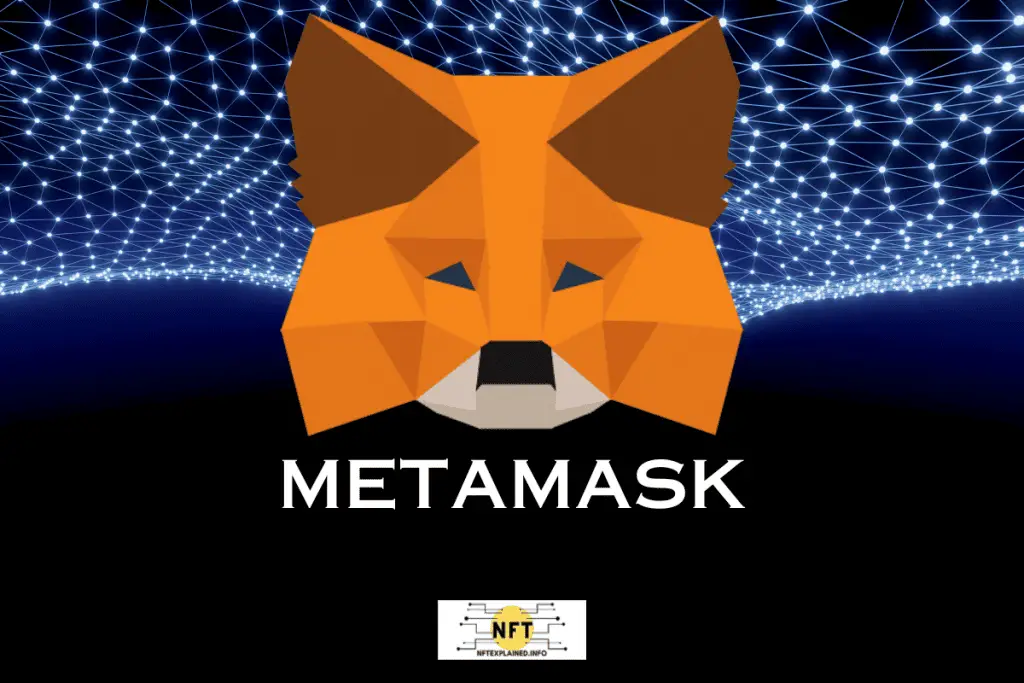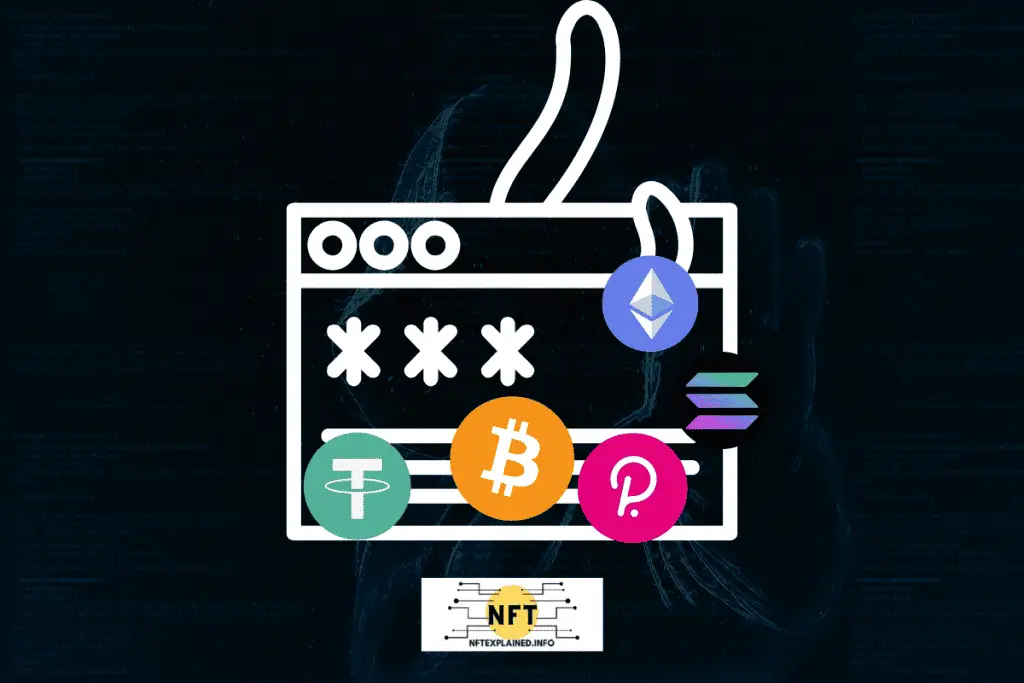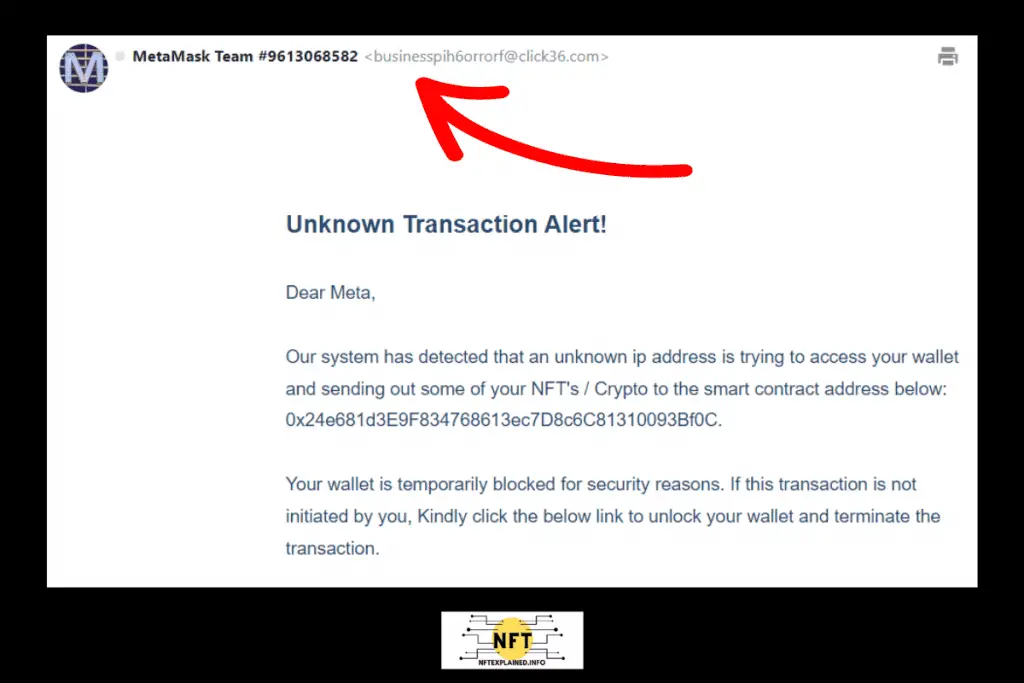
In the world of cryptocurrencies, you and I likely started out by using a centralized cryptocurrency exchange, like Coinbase or Binance. However, to secure our assets (i.e. have self-custody) and access decentralized applications (DApps) such as Uniswap – a decentralized cryptocurrency exchange – we switched to MetaMask.
Along the way we likely both discover the advantages of having a hardware wallet; however, that is an option that is not free and discussing their merits is beyond the scope of this article. (However, I do highly recommend exploring that article separately as it provides valuable insight.) Let’s get back on track, what is MetaMask?
MetaMask is a software wallet that provides self-custody and access to decentralized applications like NFT games. Acting as a bridge to blockchain networks, it enables secure control of private keys and therefore your funds; this means MetaMask users have ultimate access and control over their assets.
I have compiled a comprehensive explanation of how MetaMask functions, including insights into the inner workings of the wallet. Keep reading to discover how it operates and learn the essential information that you should be aware of (i.e. gas fees, direct deposits, swapping cryptocurrencies, adding custom tokens, and more.)
MetaMask is commonly used as a web browser extension; I will link their official site here. To ensure a secure download, check MetaMask’s reviews before installation; at the time I’m writing this, it has garnered over 3,000 downloads from the Chrome Web Store, indicating its credibility. Do the same when downloading from the app store for Android and IOS.
When creating a MetaMask wallet, you will receive a crucial seed phrase consisting of 12 words. It serves as a backup for your cryptocurrency wallet. Remember to write it down and avoid storing it online to minimize the risk of hacks. Safeguard these 12 words carefully, as anyone with access to them could potentially gain control over your assets.
After securely noting down your seed phrase, the rest of the MetaMask setup is relatively straightforward and can be completed within minutes. However, certain aspects such as token swapping and adding custom tokens may require more guidance, which is precisely why I’ve included detailed coverage of these topics in this article.
For a short but more technical explanation of how MetaMask works: MetaMask functions by providing an Ethereum web3 API, enabling direct access to the Ethereum blockchain from your browser. By connecting to an Ethereum node, it facilitates smooth interactions between web applications and the blockchain. This integration empowers users to effortlessly engage with the Ethereum ecosystem, seamlessly interact with decentralized applications, analyze blockchain data, and execute transactions. MetaMask serves as a gateway, simplifying the process of leveraging the full potential of Ethereum and DApps. MetaMask primarily supports the Ethereum blockchain, but it also has the capability to connect to other blockchains through custom RPC endpoints.
One important thing to understand about MetaMask is that it doesn’t physically hold your tokens like a traditional wallet. Instead, it securely stores the information needed to access your tokens, which is known as a private key. The actual tokens themselves will be stored on the blockchain (which is far better than in the hands of a centralized exchange).
MetaMask utilizes a public and private key pair. The public key is for identification and is openly visible on the blockchain; an example of this would be 0x6f4a8a629fb77d58e344ae89d3…
The private key, on the other hand, is for encryption and grants ownership to the user. However, you don’t need to worry about directly accessing or managing it. MetaMask takes care of safeguarding this information on your behalf, ensuring its intentional unavailability to users.
Is MetaMask Safe?
One critical matter when evaluating wallets is security – nobody wants to lose valuable assets.
MetaMask provides self-custody for assets on the blockchain, but forgetting the seed phrase can result in permanent loss as with other wallets. MetaMask is safer than centralized exchanges but also vulnerable to phishing attacks as it is a software wallet. Hardware wallets offer the highest security.
MetaMask liberates you from the reliance on centralized exchanges, mitigating the risk of events like an FTX incident. Nevertheless, it’s vital to understand that, similar to other wallets, there is no central authority available to assist in recovering a lost seed phrase.
That being said, MetaMask is still a software wallet meaning it is vulnerable to phishing attacks, where malicious actors try to deceive users and obtain sensitive information. In contrast, hardware wallets store private keys offline, providing enhanced security by keeping them isolated from online threats. The physical separation in hardware wallets significantly reduces the risk of compromise.
Being vigilant and cautious when approached by anyone requesting your seed phrase or personal information is crucial in safeguarding against phishing attacks. In the upcoming section, I will delve into the most prevalent types of phishing attacks that you need to be aware of.

Protecting Against Phishing Attacks: Watch Out For These
Phishing is a fraudulent tactic where attackers impersonate trustworthy entities to deceive individuals into sharing sensitive information. Avoid phishing attacks by verifying website legitimacy and being cautious with personal information requests (e.g. emails). Stay vigilant of anything suspicious.
I often encounter phishing attacks, mainly through social media and email. Here’s a notable example: an impersonator posing as a MetaMask employee sent me an email regarding an “unknown transaction”. However, it’s evident that the email is clearly not from MetaMask; I will add a red arrow pointing this out. Remember to exercise caution and refrain from clicking on any links in such emails.

Another common phishing attempt that occurs is when malicious actors exploit users by luring them into connecting their MetaMask accounts to seemingly authentic platforms. Unfortunately, when users log in, they unknowingly provide attackers with access to their wallets. I’ve learned it’s best to adopt a mindset where you assume that everyone is a bad actor in this space.
Understanding Gas Fees: What They Are & Why They Exist in MetaMask
Cryptocurrency and NFT trading may involve high fees, which affect both MetaMask and other wallet options. High fees arise due to the increasing number of users on the Ethereum network.
Fees exist because processing and verifying transactions on the blockchain requires energy and someone needs to do this work; this person is called a ‘miner’. Miners are paid fees which are called ‘gas’. The total cost reflects the energy required to complete a transaction on the blockchain.
Gas prices are often quite volatile depending on the amount of users attempting to complete transactions. The price depends on what miners are willing to work for; if the price is too low, they may decline to process the transaction.
Most commonly, gas fees are measured in “Gwei” which is a unit used to measure the amount of gas in Ethereum transactions. Gas refers to the computational effort required to execute operations on the Ethereum network, such as transferring tokens, executing smart contracts, or interacting with DApps.
While Gwei is a more technical term, there’s no need to worry about it as the gas fee will pop up in USD on MetaMask (as it does in every other wallet I have personally used). Additionally, if the gas fee is too high for your liking there is no obligation to proceed and you can simply hit cancel.
If you submit a transaction with a gas fee below the market rate, miners are unlikely to verify your transaction and therefore it may be stuck pending; if you run into that scenario, I highly recommend checking out our guide on fixing pending MetaMask transactions.
Understanding High Gas Fees on MetaMask
Gas fees are important to understand as they have the potential to detrimentally affect the amount of money you make. If you are not careful gas fees can be quite problematic.
MetaMask gas fees vary with Ethereum network congestion as miners prioritize higher fee transactions. MetaMask offers competitive prices by aggregating data from DEXs and market makers; however high network congestion can make these fees expensive. Additionally, MetaMask charges a 0.743% transaction fee.
The transaction fee paid to miners for verifying and securing transactions is independent of MetaMask and essential for blockchain network security. I have seen this range from as little as $0.02 – $200; this of course is heavily influenced by the blockchain network being used.
The MetaMask service charge of less than 1% can be considered negligible in most cases. When you are looking to transact, such as swap two cryptocurrencies, the quote you receive includes both MetaMasks’ 0.743% fee and the gas fee which will be paid out to a miner.
While it’s not currently possible to eliminate gas expenses altogether, I would recommend trading during off-peak hours aka when network activity is lower. You can monitor Ethereum gas prices using Etherscan which provides information on low, average, and high fees for services like OpenSea and Uniswap among others. Etherscan shows other interesting pieces of data; you can find that here.
Prices vary hugely over time. I have noticed that prices tend to peak in the morning at roughly 8AM-11AM EST and tend to have lower prices early in the morning and late at night; this is just a general trend I have identified. I’ve seen gas prices absolutely skyrocket during the minting of an NFT collection with high demand – so much so that I’ve decided to opt out of the purchase.
Quick and Simple: Installing MetaMask on Desktop
If you are on a desktop, MetaMask can be downloaded at MetaMask.io. The browser extension can be downloaded on the supported browsers: Chrome, Firefox, Brave, and Edge. The browser extension download only takes a few seconds when connected to high speed internet.
If you are not on a desktop, MetaMask can be downloaded on the app store for Android and IOS.
To ensure the security of your valuable digital assets, the site will prompt you to create a strong password (use best practices for a complex password) and provide you with a secret backup phrase (12 crucial words). Again, it is crucial to write down this backup phrase for account recovery purposes. The site will then require you to confirm the phrase by selecting the words in the correct order.
Connecting MetaMask Browser Extension to A Mobile Wallet: Step-by-Step
If you wish to be able to see your cryptocurrencies and NFTs regardless of where you are; you need to connect the desktop extension to a mobile wallet.
To connect your MetaMask extension to your mobile wallet, follow these steps: 1. Click the account logo in the top-right corner. 2. Go to Settings. 3. Select Advanced. 4. Choose ‘Sync with Mobile’. 5. Enter your password. 6. Scan the QR code on your phone.
Step-by-Step Guide: Completing Direct Deposit on MetaMask (USD to ETH)
Visit the MetaMask wallet page, click ‘Buy’, select ‘Direct Deposit’, choose USD to ETH, and enter the desired amount. Review the transaction and network fees, then proceed by providing your name and card details.
You can also send existing assets from other wallets; I highly recommend doing a test transaction of a few dollars prior to sending over large amounts of funds.
Receiving Tokens On MetaMask From Coinbase and Other Crypto Exchanges
- Copy your MetaMask public address (in the format 0x12r45…6HJ9). Note: For tokens, make sure to copy that specific tokens address from MetaMask and use that address when sending the tokens. Double-check that you have copied the correct address for the specific token you want to import.
- Go to your existing wallet or exchange.
- Paste your MetaMask address as the recipient, ensuring you have added the specific token to your MetaMask wallet.
- Before sending a large amount, complete a test transaction with a small amount to ensure everything works correctly.
- Complete the transaction, following any additional steps required by your wallet or exchange.
Step-by-Step Guide: Swapping Cryptocurrencies on MetaMask
In the example below, I am using the mobile MetaMask Application; the desktop version is extremely similar.
Go to the main wallet screen, hit the ‘swap’ button, select the cryptocurrency in which you would like to swap, enter the amount, hit the ‘Get quotes’ button – the application will show you quotes with the gas fees included. If you have enough of the cryptocurrency, the ‘Get quotes’ button will become blue and available.
When viewing multiple quotes, the best one will be automatically selected for you. You’ll then need to consider the variance in price, known as slippage. Slippage represents the rate change from quote to confirmation. You can adjust slippage from 1% to 5%, but be cautious of high fees.
To understand slippage, think of how an equity trade changes rapidly, whereas a limit order has a fixed purchase price. If market demand is insufficient, the transaction won’t occur.
MetaMask Custom Tokens: A Simple Guide to Adding Tokens
To add custom tokens to MetaMask:
- On desktop, click on “Assets.” On mobile, tap on “Tokens.”
- Click on the “Add Tokens” button.
- Search for the token using its ticker symbol. If the token doesn’t appear in the search results, click on the “Custom Token” button.
- Enter the Token Address for the custom token.
To find a custom token contact address, open up etherscan.io and then simply search for the token you are trying to find. Ensure you have the correct address by looking at factors such as the tokens market capitalization.
Simple Guide To Sending Coins on MetaMask
Go to the main wallet screen on MetaMask and click on “Send.” Select the account from which you want to send funds, then enter the recipient’s public address or scan their QR code. It’s advisable to conduct a test transaction with a small amount before sending large amounts. Finally, enter the desired amount and confirm the transaction.
Exploring MetaMask’s Role with NFT Storage
The vast majority of NFTs are stored on the Ethereum blockchain however a small number of NFTs live on other blockchains. Typically, wallets (i.e. MetaMask) store information like TokenURI which point to a hash file where the NFT is stored or directs you to the metadata that contains the actual location of the NFT.
This is not always the case as some NFTs can be stored fully on-chain.
I hope you found this article informative and continue to stay informed with NFT explained. You can find us on YouTube, Instagram, Twitter & TikTok.
If you found value in our content or wish to support our educational mission, you can collaborate with our partners by utilizing these affiliate links: Purchase a Ledger hardware wallet! U.S. users can get a crypto trading discount on Binance!
